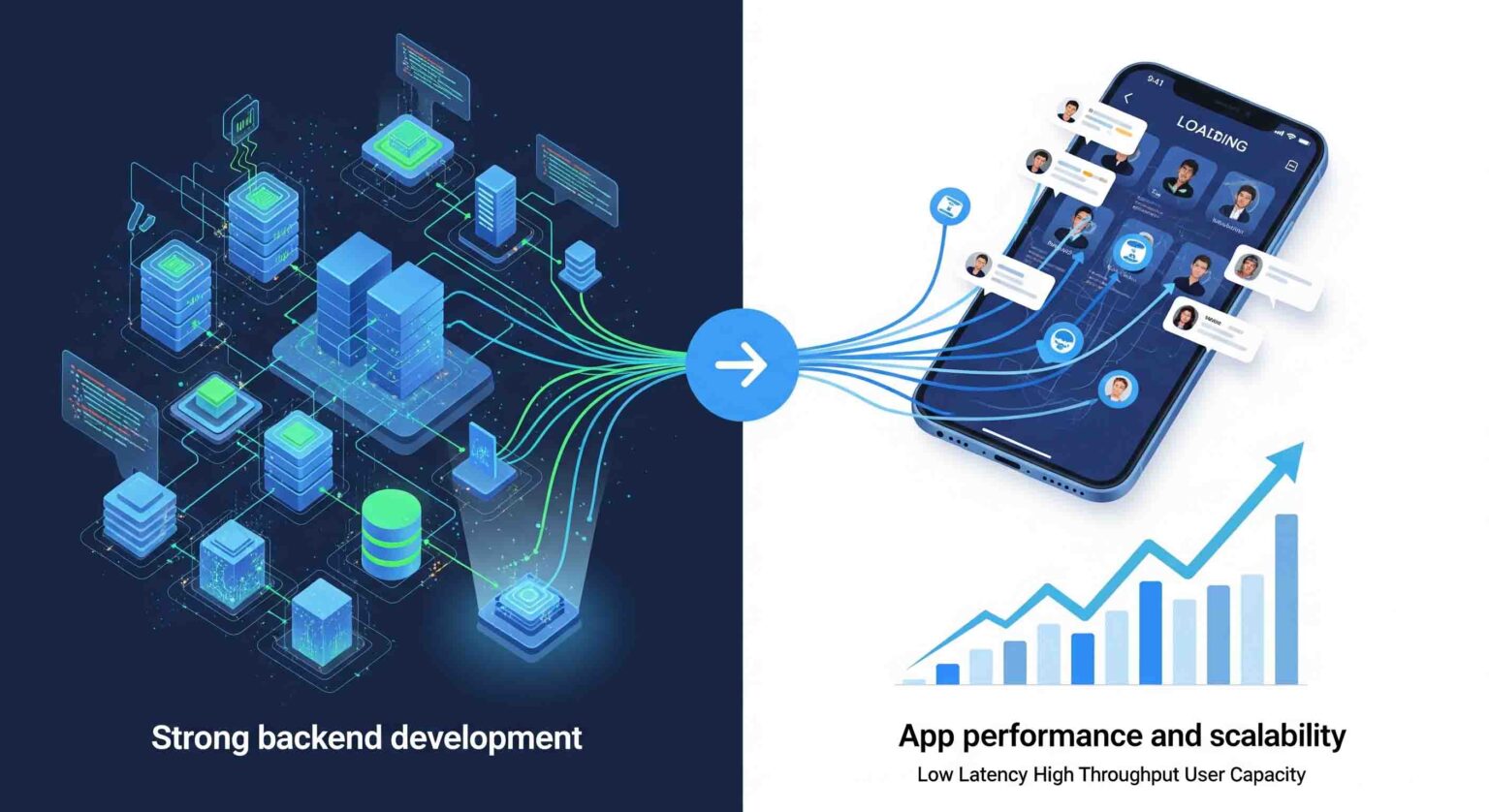Advertisement
When users think about apps, they often focus on the design and interface. But what truly powers a seamless experience is what happens behind the scenes, the backend development. From handling millions of user requests to ensuring real-time data syncing, backend systems are the backbone that keeps apps fast, reliable, and ready to scale.
In this blog, we’ll explore how backend development impacts app performance, scalability, and long-term success.
What Is Backend Development?
Backend development refers to the server-side logic, databases, APIs, and architecture that make apps function. While the frontend focuses on what users see and interact with, the backend is responsible for what happens behind the scenes.
A Statista survey (2023) found that 42% of developers prefer using cross-platform frameworks for their versatility, which not only speeds up deployment but also reduces backend maintenance costs significantly.
It manages:
- Data storage and retrieval: Ensuring information is stored securely and retrieved efficiently.
- Authentication and security: Managing logins, permissions, and encryption to protect sensitive data.
- Integrations with external systems: Connecting with third-party services, payment gateways, and APIs.
- Real-time processing of user requests: Handling simultaneous transactions and ensuring smooth user experiences.
Without a strong backend, even the most beautifully designed app would collapse under the pressure of real-world usage.
Why Backend Development Matters for App Performance
The success of any application depends not just on how it looks but on how smoothly it performs under real-world usage. Strong backend development ensures that apps are fast, reliable, and capable of handling growth without breaking down. Here’s why it plays such a crucial role in app performance:
1. Speed and Responsiveness
Backend systems handle requests every time a user logs in, makes a purchase, or loads new content. Optimized backend code, database queries, and caching mechanisms directly reduce latency. For example, even a 100-millisecond delay in load times can lower conversion rates by up to 7% (Akamai, 2023), showing how much performance matters.
2. Stability Under Heavy Loads
When traffic spikes, during a sale, product launch, or viral campaign, poorly designed backends often crash. Scalable backend frameworks with load balancing and cloud-native setups ensure stability even under unpredictable usage.
3. Data Accuracy and Integrity
Apps depend on accurate, consistent data. Backend systems ensure that transactions, payments, and updates are recorded correctly. Without this integrity, errors like duplicate charges or missing records can damage user trust.
4. Security and Compliance
Backend layers are the first line of defense against data breaches. Features like end-to-end encryption, secure APIs, and compliance-ready frameworks (e.g., GDPR, PCI DSS) ensure that user data is handled safely, which is vital for fintech, healthcare, and e-commerce apps.
5. Seamless Integrations
Most modern apps rely on third-party services (payment gateways, CRMs, social media APIs). A strong backend manages these integrations efficiently so they don’t slow down or interrupt user flows.
6. Scalability for Future Growth
Performance isn’t just about today; it’s about handling tomorrow’s demand. Modular backends with microservices and containerization ensure that businesses can scale their apps without rewriting core systems.
The Role of Backend in Scalability
Scalability is one of the biggest challenges modern apps face. An app that works for a few hundred users may struggle or even collapse when usage grows to thousands or millions. This is where strong backend development becomes the foundation of sustainable growth.
- Cloud-Native Architecture: Scales automatically with traffic spikes, ensuring apps stay responsive during peak demand such as festive sales or product launches.
- Microservices: Breaks the app into smaller, independent services such as payments, notifications, or user profiles, so each can scale separately without bottlenecks.
- Optimized Databases: Uses sharding, replication, and indexing to handle large volumes of data while keeping queries fast.
- API-First Design: Makes it easier to add new features, services, or expand into new markets without disrupting existing systems.
- Load Balancing and Caching: Distributes requests evenly across servers and stores frequently accessed data for instant delivery.
- Cost Efficiency: Ensures only the required components are scaled, saving infrastructure costs while maintaining high performance.
Final Words
The strength of any application lies in its foundation, and that foundation is the backend development. A well-designed backend ensures faster performance, seamless integrations, and the ability to scale as user demand grows. It not only keeps apps stable under heavy loads but also safeguards sensitive data and supports long-term innovation.
In today’s competitive digital landscape, businesses cannot afford to treat backend systems as an afterthought. Investing in robust backend development means investing in user trust, operational efficiency, and future scalability. Whether you are building a startup app or expanding an enterprise platform, the backend is what determines how far and how fast your application can grow.












